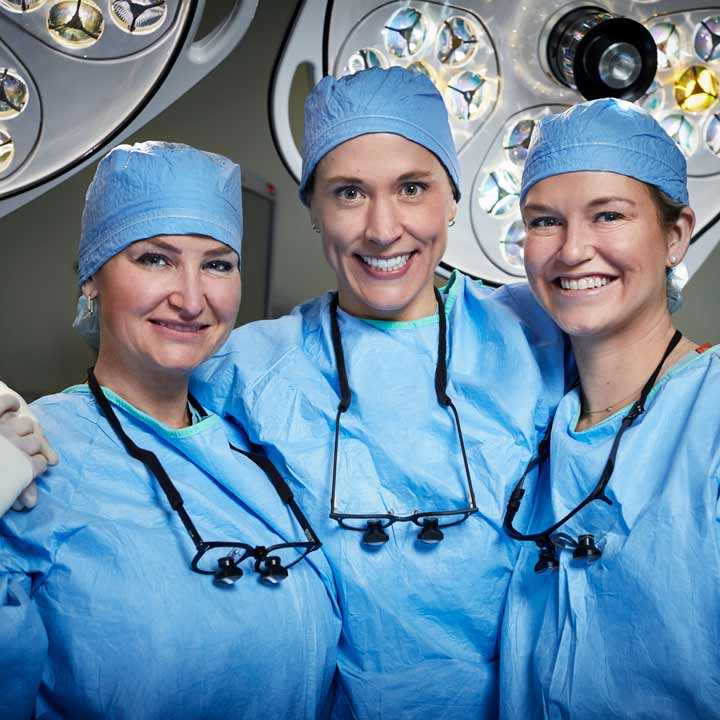 With a sizable gender gap nationally among physicians (especially surgeons) in otolaryngology, Minka Schofield, MD, MPH, and Leslie Kim, MD, MPH, are working to bring equity to the field.
With a sizable gender gap nationally among physicians (especially surgeons) in otolaryngology, Minka Schofield, MD, MPH, and Leslie Kim, MD, MPH, are working to bring equity to the field.
“Diversity helps promote unique thought and innovation,” Dr. Schofield says. “This perspective is very important at local and national levels. It’s something we must actively encourage because diversity in medicine, especially in the field of otolaryngology, can be challenging.”
Dr. Schofield, clinical professor in the Department of Otolaryngology – Head and Neck Surgery at The Ohio State University College of Medicine and division director of General Otolaryngology at The Ohio State University Wexner Medical Center, recently finished her term as chair of the Women in Otolaryngology Section of the American Academy of Otolaryngology – Head and Neck Surgery (AAO-HNS), where she oversaw the governing council, programming and initiatives. This section is one of the largest bodies of women otolaryngologists in the nation.
“I established very specific goals including promoting networking, fostering professional and interpersonal relationships, tackling issues facing women in otolaryngology like parental leave, partnering with industry to support leadership development and increasing visibility of women at the AAO annual meeting,” Dr. Schofield says.
Dr. Kim, clinical associate professor in the Department of Otolaryngology – Head and Neck Surgery at the Ohio State College of Medicine and division director of Facial Plastic and Reconstructive Surgery at the Ohio State Wexner Medical Center, is currently serving a three-year term as chair of the Women in Facial Plastic Surgery Committee of the American Academy of Facial Plastic and Reconstructive Surgery. In this role, Dr. Kim is working to advance gender equity in the field nationally.
Just 13% of facial plastic surgeons are women, and there’s a significant gender gap in leadership, promotion, academic productivity and pay in the facial plastic surgery field. Dr. Kim is working to shift this balance and promote gender equity through educational programming that addresses leadership, mentorship, sponsorship, work-life integration, negotiations and practice management.
“We know that women lag far behind men in leadership roles like chairs and deans,” Dr. Kim says. “However, as the face of medicine changes, leadership should represent the trainees coming into the field who are our future.”
These efforts extend across the university. The current otolaryngology residency class at the Ohio State College of Medicine (one of the largest classes in the nation) is approaching 50% women. Additionally, the ShENT group in the Department of Otolaryngology works to connect women residents, fellows, faculty and staff through professional relationships, mentorship, coaching and social engagements.
“The average medical school class has more women than men, but this does not translate into women entering surgical fields of practice,” Dr. Schofield says. “One way we’re trying to improve that at Ohio State is by attracting more women faculty to our department. This in turn leads to attracting more women residency and fellowship candidates applying to our program because they can see examples of other women thriving in our specialty, who can serve as role models and mentors. The College of Medicine and department are deeply invested in making sure that women faculty are successful.”
